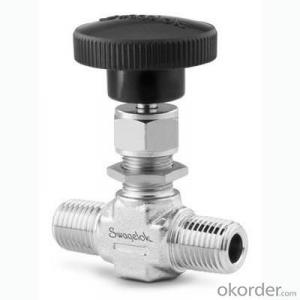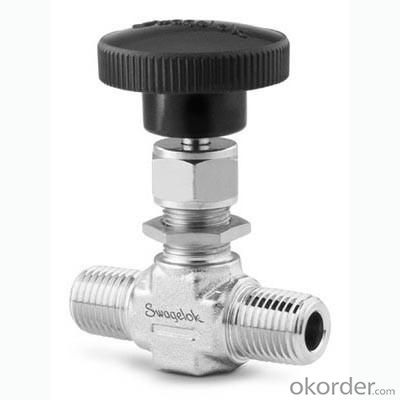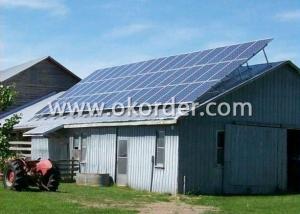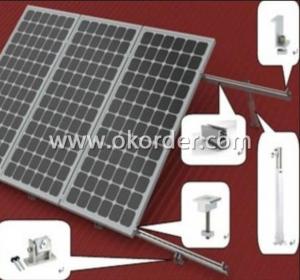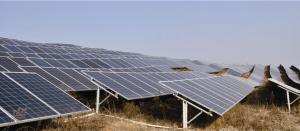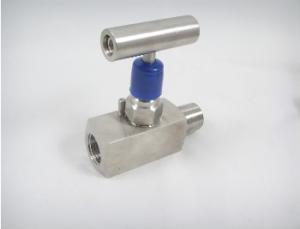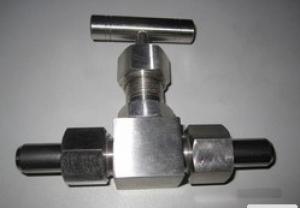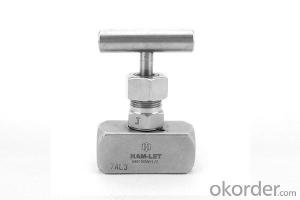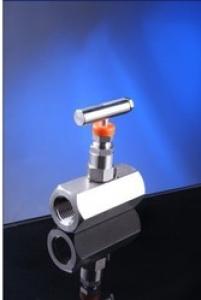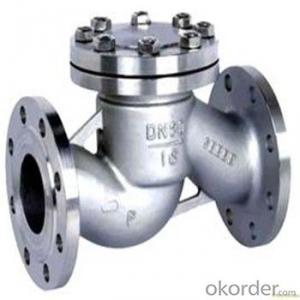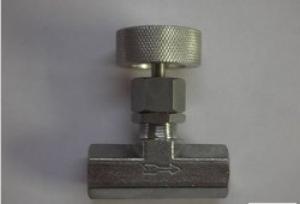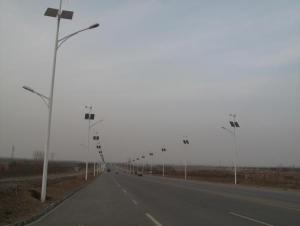needle valve/check restrictive valve Stainless steel needle valve
- Loading Port:
- China main port
- Payment Terms:
- TT OR LC
- Min Order Qty:
- 1000 pc
- Supply Capability:
- 100000 pc/month
OKorder Service Pledge
OKorder Financial Service
You Might Also Like
Specifications
needle valve/check restrictive valve
1.stable work performance
2.low-cost installation
3.control and reliability
Model L restrictive valve is used to adjust fluid flow in both directions. It can also be used to shut off fluid flow. The LA 1-way restriction valve is used to adjust accurate flow rate in one direction while allowing free reverse flow.
needle valve is used to control the flow by changing the throttle sections or length.
needle valve is a simple flow control valve,which can constitute the throttle system with other components.
1-way restriction valve is consisted of needle valve and 1-way valve in parallel.it is used to adjust the flow in one way,and reverse back freely.
1.stable work performance
2,competitive price
2,small size
4.low-cost installation
5.control and reliability
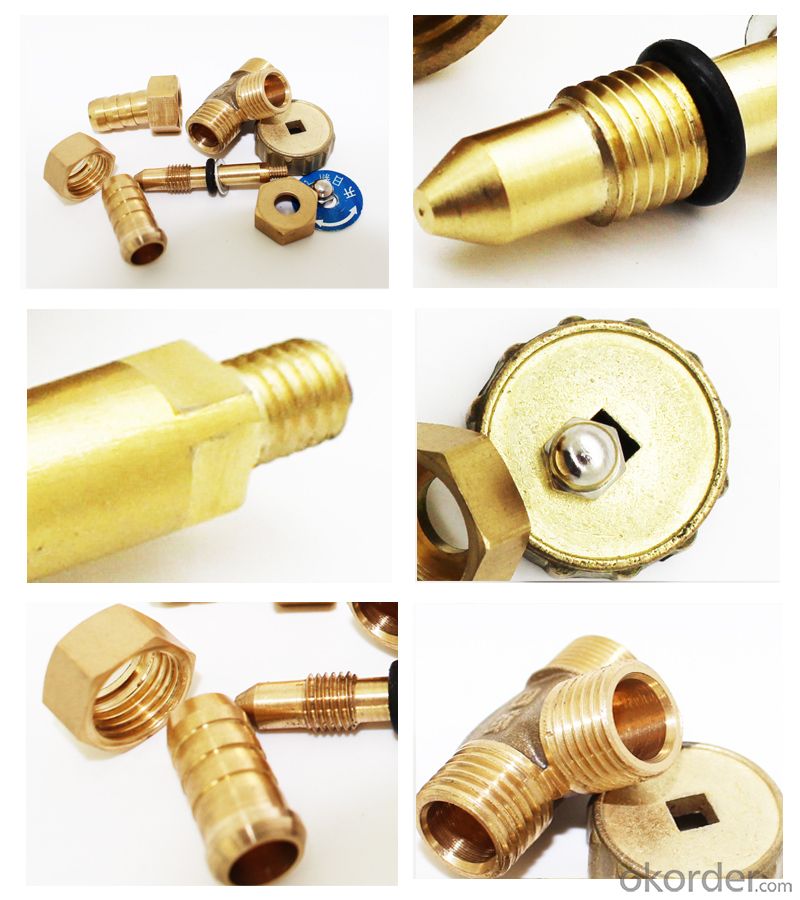
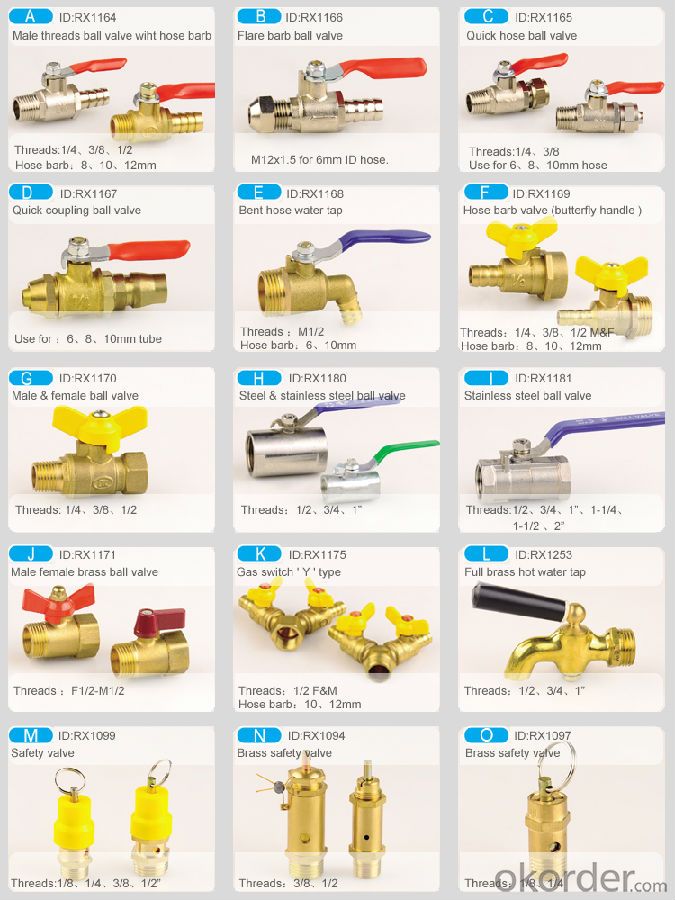
- Q: How do solar panels affect wildlife?
- Solar panels can have both positive and negative effects on wildlife. On the positive side, solar panels can provide a habitat for certain species, such as birds or insects, as they can create shaded areas or serve as perches. Additionally, solar farms often have vegetation underneath or around the panels, which can attract and support a diverse range of wildlife. However, there are also potential negative impacts to consider. Large-scale solar projects can disrupt or destroy natural habitats, leading to the displacement or loss of certain species. Additionally, solar panels can pose a risk to birds and other flying animals if they are not properly designed or installed. Glare from the panels may also impact wildlife behavior or migration patterns. Overall, it is important to carefully plan and manage solar installations to minimize any negative impacts on wildlife while maximizing the benefits they can provide.
- Q: Can solar mounting systems be installed on mobile or temporary structures?
- Yes, solar mounting systems can be installed on mobile or temporary structures. These systems are designed to be versatile and adaptable, allowing them to be easily installed and removed from various structures, including mobile or temporary ones. This flexibility makes it possible to harness solar energy in a wide range of applications, such as on vehicles, trailers, tents, or other temporary structures.
- Q: Are solar vacuum tubes suitable for industrial applications?
- Yes, solar vacuum tubes are suitable for industrial applications. They offer high efficiency in converting solar energy into heat, making them ideal for industrial processes such as water heating, space heating, and industrial drying. Their ability to withstand high temperatures and their durability make them reliable and cost-effective for industrial use.
- Q: Can a solar energy system be used in areas with high levels of dust or sand?
- Yes, a solar energy system can still be used in areas with high levels of dust or sand. However, the efficiency of the system may be affected as the accumulation of dust or sand can reduce the amount of sunlight reaching the solar panels. Regular cleaning or maintenance may be required to ensure optimal performance of the system in such environments.
- Q: Can a solar controller be used in a mobile solar power system, such as an RV or boat?
- Yes, a solar controller can definitely be used in a mobile solar power system such as an RV or boat. In fact, it is highly recommended to use a solar controller in such systems to ensure efficient and safe charging of the batteries. A solar controller, also known as a charge controller, is designed to regulate the flow of solar energy from the solar panels to the batteries. Its main purpose is to prevent overcharging and over-discharging of the batteries, which can lead to damage and reduce their lifespan. In a mobile solar power system like an RV or boat, where the solar panels are exposed to varying sunlight conditions and the batteries are constantly being charged and used, a solar controller becomes even more important. It helps optimize the charging process by adjusting the voltage and current to match the battery's requirements, thereby maximizing the charging efficiency. Furthermore, a good quality solar controller will also have additional features like temperature compensation and load control. Temperature compensation ensures that the charging parameters are adjusted based on the ambient temperature, which helps prevent any potential damage to the batteries. Load control allows you to connect additional loads to the system, such as lights or appliances, and ensures that they are powered directly from the solar panels without draining the batteries. In summary, a solar controller is an essential component in a mobile solar power system like an RV or boat. It helps regulate the charging process, protects the batteries, and maximizes the efficiency of the solar energy utilization.
- Q: Are solar lights suitable for historical monuments?
- Yes, solar lights are suitable for historical monuments. They provide a cost-effective and environmentally friendly lighting solution that preserves the aesthetics and integrity of the monument while reducing energy consumption. Additionally, solar lights can be easily installed in remote locations without the need for extensive wiring, making them a practical choice for illuminating historical landmarks.
- Q: How much space is required to install a solar water heater?
- The space required to install a solar water heater can vary depending on the size and type of the system. Generally, a typical solar water heater requires around 10-15 square feet of roof space for installation. However, it's recommended to consult with a professional installer to determine the exact space requirements for your specific system.
- Q: What is the role of the solar water heater's reflector
- Solar vacuum heat collection tube, because of installation, sealing and other reasons. It can not be arranged closely
- Q: Can solar collectors be used for heating water for commercial purposes?
- Yes, solar collectors can be used for heating water for commercial purposes. Solar thermal systems, which use solar collectors to capture and convert sunlight into heat, can efficiently provide hot water for various commercial applications such as hotels, hospitals, restaurants, and laundries. This renewable energy solution offers cost savings, reduces carbon emissions, and is a sustainable alternative to traditional water heating methods.
- Q: Can a solar pump be used in areas with limited access to water purification systems?
- Yes, a solar pump can be used in areas with limited access to water purification systems. Solar pumps are designed to draw water from various sources such as wells, rivers, or ponds. While the water may not be purified through traditional methods, such pumps can provide a consistent supply of water for various purposes like irrigation or household use. However, it is important to note that additional water treatment methods may be required to ensure the water is safe and suitable for drinking or other sensitive applications.
Send your message to us
needle valve/check restrictive valve Stainless steel needle valve
- Loading Port:
- China main port
- Payment Terms:
- TT OR LC
- Min Order Qty:
- 1000 pc
- Supply Capability:
- 100000 pc/month
OKorder Service Pledge
OKorder Financial Service
Similar products
Hot products
Hot Searches
Related keywords
